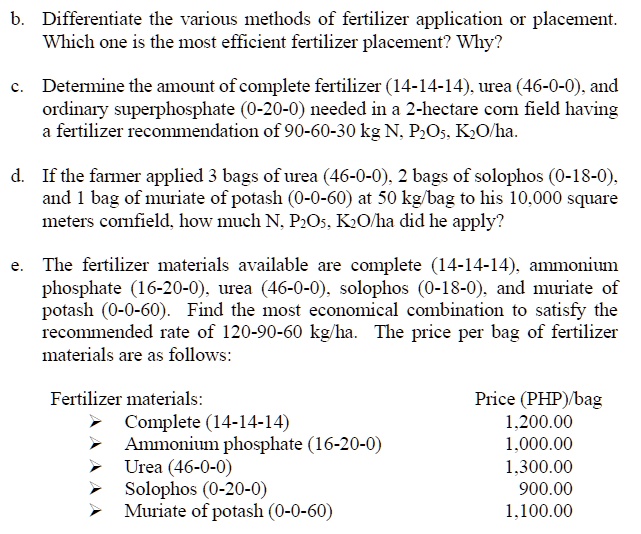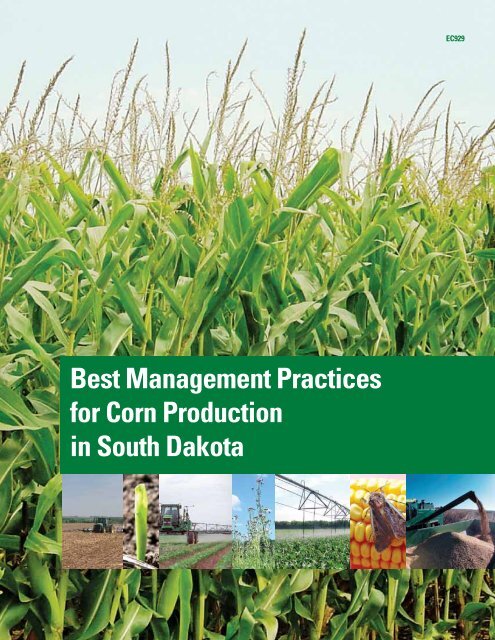Fertilizer For Corn: The Ultimate Guide To Growing Bigger Better Crops
Corn is a nutrient-intensive crop, so it's important to fertilize it regularly to ensure that it grows big and healthy. The type and amount of fertilizer you use will depend on the soil quality in your garden, the variety of corn you're growing, and the climate you live in.
In general, corn needs a balanced fertilizer that contains nitrogen, phosphorus, and potassium. Nitrogen helps the corn plants grow tall and leafy, phosphorus helps them produce strong roots and tassels, and potassium helps them resist disease and produce healthy ears of corn.
If you're not sure what type of fertilizer to use, you can ask your local nursery or garden center for recommendations. They can help you choose a fertilizer that's right for your specific needs.
How to Fertilize Corn
The best time to fertilize corn is when you plant it. You can also fertilize it again about two weeks after planting, and then once a month throughout the growing season.
To fertilize corn, simply spread the fertilizer around the base of the plants, being careful not to get it on the leaves. You can use a broadcast spreader or a hand-held fertilizer spreader.
If you're using a liquid fertilizer, you can mix it with water and apply it to the soil with a watering can or garden hose.
How Much Fertilizer to Use
The amount of fertilizer you need to use will depend on the size of your garden and the type of fertilizer you're using. Follow the directions on the fertilizer label carefully.
In general, you'll need to apply about 1 pound of nitrogen per 100 square feet of corn crop. You can split this application up into two or three smaller applications throughout the growing season.
Fertilizing Corn in Containers
If you're growing corn in containers, you'll need to fertilize it more often than corn that's planted in the ground. This is because the soil in containers tends to drain more quickly, so the nutrients are leached out more easily.
You can fertilize corn in containers once a week with a water-soluble fertilizer. Use a fertilizer that's balanced for corn, such as a 10-20-20 fertilizer.
Fertilizing Corn in Poor Soil
If you have poor soil, you may need to fertilize corn more often or use a higher-nitrogen fertilizer. You may also want to consider adding compost or other organic matter to the soil before planting.
Fertilizing Corn for a Fall Harvest
If you're growing corn for a fall harvest, you'll need to start fertilizing it earlier in the season. This is because corn plants need more time to grow when they're planted in the spring.
You can start fertilizing corn for a fall harvest about six weeks after planting. Apply a balanced fertilizer, such as a 10-20-20 fertilizer, once a month throughout the growing season.
Conclusion
By following these tips, you can fertilize your corn plants properly and ensure that they grow big and healthy. With a little care and attention, you'll be enjoying fresh, homegrown corn in no time!
Are you looking for information about 46-0-0 fertilizer for corn? If so, you can visit Home Gardening for more information. This website provides a wealth of information about corn fertilizer, including the benefits of using 46-0-0 fertilizer, how to apply it, and the best time to apply it. You can also find information about other types of corn fertilizer, as well as tips for growing healthy corn crops.
FAQ of 46 0 0 fertilizer for corn
What is 46-0-0 fertilizer?
46-0-0 fertilizer is a type of nitrogen fertilizer that contains 46% nitrogen, 0% phosphorus, and 0% potassium. It is a fast-acting fertilizer that is typically used to provide a boost of nitrogen to corn plants.
- What are the benefits of using 46-0-0 fertilizer on corn?
The main benefit of using 46-0-0 fertilizer on corn is that it provides a quick and easy way to add nitrogen to the soil. This can help to increase the growth rate of corn plants and improve their yield. 46-0-0 fertilizer is also relatively inexpensive, making it a cost-effective option for corn growers.
- How should I apply 46-0-0 fertilizer to corn?
46-0-0 fertilizer can be applied to corn plants at any time during the growing season. However, it is most effective when applied during the early stages of growth, when corn plants are most hungry for nitrogen. 46-0-0 fertilizer can be applied to the soil as a broadcast application or as a side-dressing application. When applying 46-0-0 fertilizer as a broadcast application, spread the fertilizer evenly over the entire cornfield. When applying 46-0-0 fertilizer as a side-dressing application, apply the fertilizer 2-3 inches to the side of the corn plant and 1-2 inches below the soil surface.
- How much 46-0-0 fertilizer should I use on corn?
The amount of 46-0-0 fertilizer you need to use on corn will depend on the type of soil you have, the yield you are expecting, and the stage of growth of your corn plants. In general, you will need to apply 1-2 pounds of 46-0-0 fertilizer per 100 square feet of cornfield.
- What are the risks of using 46-0-0 fertilizer on corn?
The main risk of using 46-0-0 fertilizer on corn is that it can burn the plants if it is applied too heavily or if it is not applied properly. 46-0-0 fertilizer can also leach into groundwater if it is not applied correctly. To avoid these risks, it is important to follow the instructions on the fertilizer label carefully.
Image of 46 0 0 fertilizer for corn
- A bag of 46-0-0 fertilizer for corn. The bag is white with black lettering. The NPK ratio is printed on the front of the bag.
- A scoop of 46-0-0 fertilizer being spread on a cornfield. The fertilizer is a white powder. It is being spread evenly over the soil.

- A corn plant growing in soil that has been fertilized with 46-0-0 fertilizer. The plant is healthy and green. The leaves are full and the stalks are strong.
- A close-up of the corn kernels on a corn plant that has been fertilized with 46-0-0 fertilizer. The kernels are large and plump. They are a bright yellow color.
- A farmer measuring out 46-0-0 fertilizer to apply to a cornfield. The farmer is wearing a protective mask and gloves. He is using a scale to measure out the correct amount of fertilizer.

- A cornfield after it has been fertilized with 46-0-0 fertilizer. The plants are green and healthy. The soil is dark and loose.

- A research study showing the results of using 46-0-0 fertilizer on corn crops. The study found that corn crops that were fertilized with 46-0-0 fertilizer produced higher yields and had better quality kernels.
- A graph showing the relationship between the amount of 46-0-0 fertilizer used and the yield of corn crops. The graph shows that as the amount of fertilizer used increases, the yield of corn crops also increases.
- A table listing the recommended rates of 46-0-0 fertilizer for corn crops. The table shows the amount of fertilizer to use for different types of corn crops and soil conditions.

- A website with information about 46-0-0 fertilizer and its use on corn crops. The website includes a fact sheet, a FAQ section, and a blog post about the benefits of using 46-0-0 fertilizer on corn crops.

Post a Comment for " Fertilizer For Corn: The Ultimate Guide To Growing Bigger Better Crops"